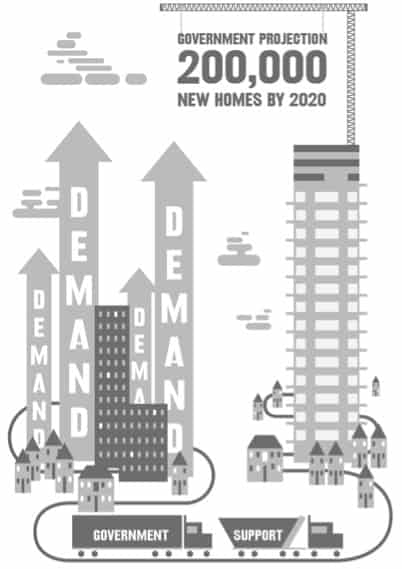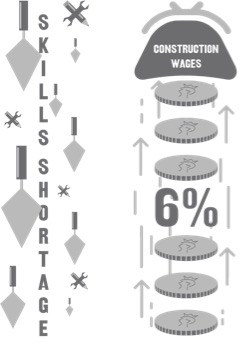Specialist engineering recruitment agency Spencer Ogden examines why it's a good time to consider a career in the built environment sector
Built environment is a sector that continues to attract more headlines. Like most technical disciplines, built environment is fighting for its share of the talent pool across the globe. Today, employers are finding it increasingly difficult to fill skilled roles due to a lack of available talent, across all construction platforms. It is a crisis that is putting additional strain on the industry’s supply chain and causing many disruptions to building firms, which is further increasing costs and causing project delays. The skills gap has become so large that it is now impossible for it to be immediately resolved by one party or sector alone as it will require a collaborative effort.
Finding concrete solutions
Many officials believe the sector is still recovering from the recession which occurred in 2008. According to David Picton, chief sustainability officer at Carillion, one of the UK’s biggest construction and facilities management groups, there are several reasons why the recession has had an enormous effect on the industry. “In a recession, construction is always the last industry to slow down and the last to pick up,” says Mr Picton. “Workers left the industry and, at the same time, young people were not inspired to join to replace them.” Overtime many workers chose other professions due to the lack of perceivable career prospects across the field. Apprenticeships have always been an effective means of attracting fresh employees and provide many cost reducing benefits for employers, however, this is not the only strategy that can solve the current skills shortage crisis.

In the UK, the creation of the built environment skills gap was unavoidable. “The UK construction sector has taken a dip in Q1, largely due to the uncertainty surrounding the EU referendum, planning delays and public spending cuts,” says Zoe Lane, head of built environment at Spencer Ogden’s London office. Despite this noticeable hesitancy, work in built environment has continued to mount. It is a field that is constantly evolving and expanding – and fast. “Demand still remains strong particularly within the private sector housing and infrastructure markets with the governments promise to support new infrastructure and building programmes and its pledge to deliver 200,000 new homes by 2020,” says Lane. In order to meet the rising demand of talented staff, it is estimated that more than 600,000 constructions professionals will be required in London and the South East for construction projects by 2017.
The digital construction evolution
There is now a cutting edge skill that is favoured among many managers hiring across the sector. We are all witnessing the rise of digital construction and other modern methods of manufacturing, and it is because of this shift that construction is gaining popularity and closing the skills gap. Infrastructure in particular is now an industry that is not only measured on aesthetics and financials, but also on the industry’s ability to adapt to new technologies. Innovation through the use of design, equipment, materials and energy resources is increasing the demand for a dynamic workforce. “We’re moving into a technological era where skills like digital construction are becoming key,” says Ms Thornhill, human resources director for the UK, Middle East and Africa at engineering consultant Arup.
Attraction and retention
Royal Institute of Chartered Surveyors (RICS) revealed construction wages rose by six per cent in 2015 due to a significant skills shortage. In a statement, Simon Rubinsohn, RICS chief economist, explains, “Industry wages are becoming increasingly attractive, and I would hope that over time this will encourage skilled workers to return to the sector, as well as drawing school leavers and graduates towards construction industry careers.” Introducing flexible working hours and investing in bespoke training schemes will enable built environment employees to feel empowered in their respective roles. Also, it was recently confirmed that 19% of the construction workforce will retire in the next five to ten years. With many older workers retiring there are few left to train new recruits, which places more pressure on acquiring a workforce that is well-trained and will work in the sector long term.

Building a prosperous future
Built environment is a field that is striving to acquire world-class expertise in architecture, design and engineering a sector. There are considerable growth opportunities across the global construction market as it has been forecasted to grow by over 70% by 2025. Harnessing the power of technology will continue to strengthen the industry and push the boundaries of design and operations. What built environment needs is industry bodies working with education, government and businesses to find a sustainable solution. Companies can’t just sit back and wait for perfect workers to appear out of thin air. If the industry continues to promote an image that is one of hard hats and steel capped boots, then the capabilities of attracting a diverse workforce can only go so far.
Spencer Ogden is a global energy, engineering and infrastructure recruitment specialist




April 1886: the Brunkebergs tunnel
First ever example of a ground source heat pump?